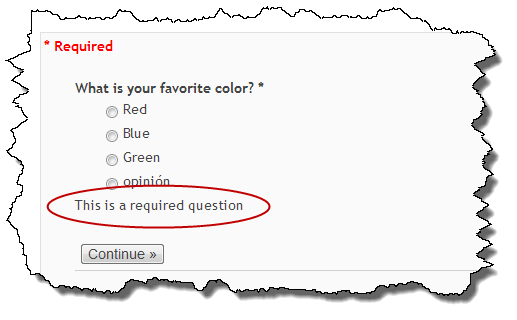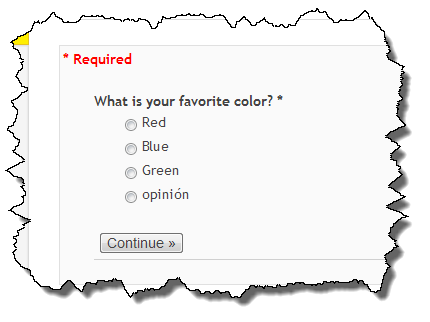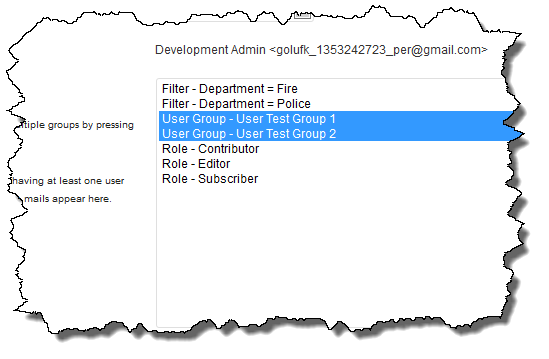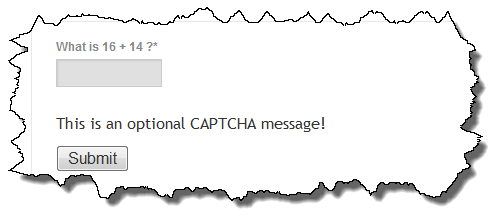I released beta-2 of WordPress Google Form v0.56 today. This beta release improves the new Transient support by correctly handling transients when running the plugin under WordPress Multi-Site.
Google Forms Beta (8799 downloads )Category Archives: WordPress
Email-Users v4.5.0 released
I have not had any additional issues reported against the v4.5.0-beta-2 release of Email-Users so I have released it to the WordPress plugin repository. The update should appear on your Dashboard soon! Thanks to everyone who provided feedback on the beta releases.
WordPress Google Form v0.56-beta-1 available
I have posted the initial beta version of WordPress Google Form v0.56. This preliminary release has bug fixes to handle UTF-8 characters in from values and also handles the unusual case where a tab character is embedded in the form response value.
The embedded tab issue was particularly tricky to track down as it is (a) it wasn’t obvious since web browsers render tabs as white space and (b) it isn’t easy to actually enter a tab into an HTML form (which is how Google Forms are created). I was able to embed a tab in a form response by pasting some text from Word. It turns out the user that had the problem I was trying to resolve had done the exact same thing.
Handling the tabs turned out to be tricky so initially I thought I thought I might have to simply detect them and display a warning but in the end I was able to find a viable solution.
This beta release also has the first implementation of Transients for the initial rendering of a form. This use case is likely not all that common but came from a user who had four (4) forms on a single page and was seeing timeouts from Google. Caching the initial rendering of the form will help in this situation. Thanks to Camilo Flores for providing a patch which I based the implementation on.
Google Forms Beta (8799 downloads )Google Updates Forms Again
Sometime in the past few days (as near as I can tell) Google has updated Forms again. This most recent update adds the H5F Javascript library to do required field checking. This functionality is similar to the jQuery Validation plugin solution I included in WordPress Google Form a number of months ago.
This new validation functionality doesn’t appear in all forms, just those created after a certain date. Existing forms do not appear to have this new functionality embedded in it.
So how do I know if I have the new functionality? The most obvious sign is the appearance of the text “This is a required question” underneath the form element.
It is fairly easy to make these messages go away since they are redundant with the plugin functionality.
You can add the following to your Custom CSS (form specific or global):
div.required-message {
display: none;
}
This will hide the messages and the form reverts to looking as it did prior to Google’s latest change.
I will likely include this CSS as part of the default CSS in the next update but I need to do a little more testing first.
Email-Users v4.5.0-beta-2 now available
The 2nd beta release of Email-Users v4.5.0 is now available. This version fixes one issue with the integration of User Access Manager and the “Send to Group” function.
Email Users Beta (5649 downloads )WordPress Google Form v0.55 released
Yesterday WordPress 3.6 was released. The bundled version of jQuery was updated to 1.10 which broke the jQuery Columnizer plugin I use to split a form into columns. The result was jQuery would go into an infinite loop and eventually you would have to kill the page.
Fortunately someone had already encountered this problem and provided a patch to the jQuery plugin. I have incorporated the patch and released v0.55. If you’re running WordPress 3.6, this is a critical release. Older versions should continue to run correctly.
You can find v0.55 on your WordPress Dashboard or in the plugin repository.
Email-Users v4.5.0-beta-1 now available
I’ve been working on Email-Users this week and have added quite a bit of functionality. Before I release it I’d like to get a few people put an early version through its paces so if you have a chance to test it out, please do so.
This new version has a number of new features:
- All postboxes on the admin screens now have their own CSS ID and Class so they can be styled or easily hidden.
- Email-Users now support integration with two User “Group” plugins: User Groups and User Access Manager. When you set up groups in either of these plugins you will be able to select them as recipients from the Group Email and Post/Page Notification pages.
- Selection of Custom Filters as Group Recipients is no longer a separate action – it, along wit the Group support noted above, are all presented in the same target recipient selection list. This allows the Custom Filters to work on Post/Page Notifications as well.
- A new action has been introduced: mailusers_update_custom_meta_filters This action will allow for updating meta filters dynamically just prior to their use. This is the best way to create complex meta filters or integrate other plugins. There is a good example in the plugin README file.
- Chinese language support has been contributed.
- Integration panel added to the Plugin Settings Page.
- Updated language support files which incorporate 20+ new strings.
A few other things were cleaned up while I was tinkering with the code as well.
Email Users Beta (5649 downloads )I have also updated the sample plugin file I use to test Custom Meta Filters. It has the full example of the “Public Works” example.
Email Users Custom List (5797 downloads )New capabilities for Email-Users
I am finally getting around to incorporating a patch for Email-Users which adds integration with the User Groups plugin.
The way the patch was written it removed the ability to send to Groups based on standard WordPress Roles and replaced it with Groups defined by the User Groups plugin. While this is useful for the user who submitted the patch (thank you for doing so), I don’t think it is the right way to do this sort of integration in the general case.
I don’t think eliminating the standard functionality is always a good idea so I am incorporating the patch such that being able to target groups of users through either standard WordPress roles OR via User Groups defined groups is possible.
To that end, I have always considered the way I implemented custom groups and filters sort of half finished. While they work for sending email, they don’t work for Post and Page notifications which is a limitation. So I have decided to revamp how I am presenting groups of users for both Email and Notifications.
You will be able to mix and match Roles, User Groups (when the plugin is active) and Filters to target the recipients of Email and/or Notifications. I hope to have a beta release out later today for people to test with.
WordPress Google Form v0.54 released
This morning I released v0.54 of WordPress Google Form. It has been a while since I’ve had any bug reports for the current version or the beta version. Things appear pretty stable.
- Added internationalization support for jQuery Validation messages.
- New language support files.
- New jQuery Validation based custom validation option.
- Fixed problem with escaped characters ending up in Google spreadsheet.
- Moved transport control out of debug module and into core code so it can be a permanent setting for some server environments.
- Fixed PHP warning messages which happen with Logging Enabled when some of the server variables don’t exist.
- Fixed bug with Form Submission Log setting stickiness.
- Added an optional CAPTCHA message which will appear below the CAPTCHA input when set.
WordPress Google Form v0.54-beta-7 now available
I have just posted what I hope is the final beta release of WordPress Google Form v0.54. This latest beta release fixes a couple of minor issues, notably the lack of stickiness on the Form Submission Log setting and adds one new feature. You can now define a CAPTCHA message to appear below the CAPTCHA input box. These two screen shots show the information on the Plugin Settings page and the result when the form is rendered. The message is placed in a DIV which has the class “wpgform-captcha-description” so it can be styled as needed.
Google Forms Beta (8799 downloads )



